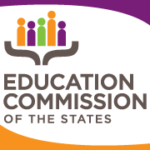

At a time when change and reform are the key buzzwords in education policy, it is imp erative that we consider if states have the capacity and expertise to fully implement new education policies. Passing meaningful policies is merely the first step in a long journey when it comes to creating the desired improvements needed for students. Real change and real improvements come when meaningful policies can actually be put into effect.
erative that we consider if states have the capacity and expertise to fully implement new education policies. Passing meaningful policies is merely the first step in a long journey when it comes to creating the desired improvements needed for students. Real change and real improvements come when meaningful policies can actually be put into effect.
While education leadership is a vital component to successful policy implementation, it is also an area in which we are seeing significant change. Currently, 50 percent of chief state school officers are new or have been in their role for less than a year.i In the legislative arena, more than 30 percent of the chairs of education committees are new to the role and have led committee work around education reform and accountability for less than one legislative session.ii
As Congress continues to debate possible reauthorization of the Elementary and Secondary Education Act (ESEA) after 12 years with No Child Left Behind (NCLB), many of the policies in both the Senate and House lean towards providing states with greater authority over how to hold schools accountable. This is a dramatic policy change and one that may be difficult for some states to enforce.
After facing difficult recession-era funding cuts and dramatic turnover in agency staff, the ability for a state education agency to immediately assume the roles of key accountability and enforcement will require an honest review of their capacity and expertise. This is especially true considering that for more than 12 years, many states have approached accountability by highlighting federal government mandates, an approach that may be completely void with the pending ESEA reauthorization.
Now more than ever, state education leaders need to carefully weigh new education initiatives and think through issues such as capacity and implementation. The State Education Policy Checklist is a new tool created with this exact need in mind. Developed by the Education Commission of the States, The Aspen Institute, The Council of Chief State School Officers, and the State Legislative Leaders Foundation, the checklist assists policymakers as they consider implementation barriers that may prevent even the most well-intentioned policies from truly having an impact on education outcomes.
Remember, high school seniors this year have spent their entire K-12 experience under the federal accountability policies in NCLB. The pending ESEA reauthorization has the potential to be meaningful for states, but with the current education environment and such large-scale changes at the state level, each new policy will require a thorough review to ensure the state has the capacity and expertise to implement these policies in a manner that truly improves education for all impacted.
iCouncil of Chief State School Officers
iiNational Council of State Legislatures